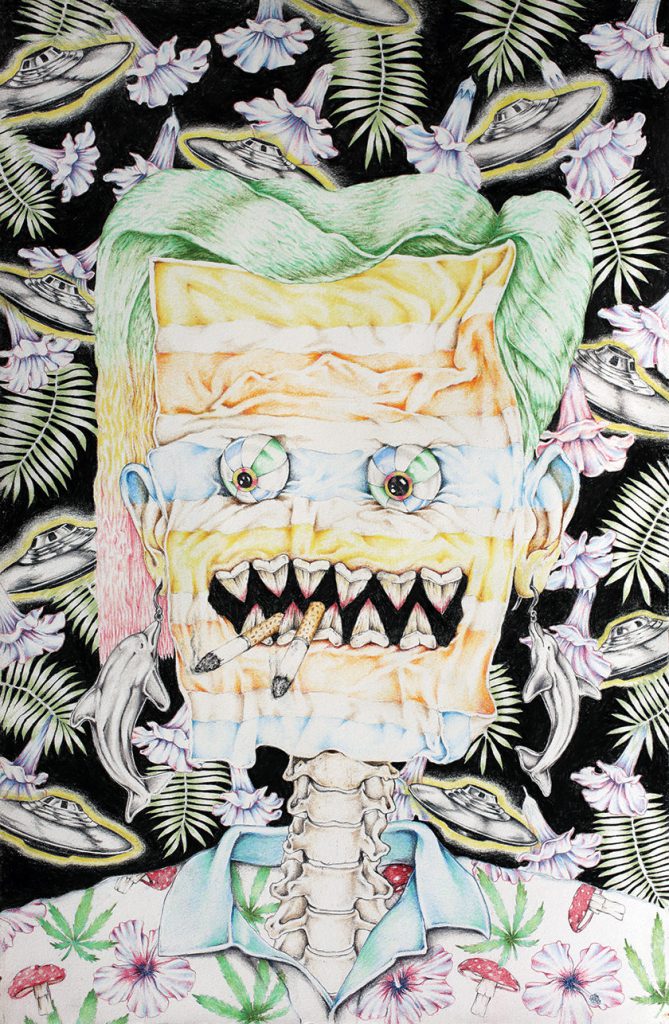Cahill Wessel
With Liza St. James
When I’m not fighting super villains in far off places, I’m busy drawing pictures of this crazy world we live in. It is a world of great wonder, limitless chaos, and exceptional beauty.
LSJ: You call yourself a “beach party monster” and it seems like you are good at having fun. What kind of role does fun have in your life? Does it provide inspiration?
CW: “Fun” has a very prominent role in my life and work. Above all, I want my work to be lighthearted and fun, and I strive to let these traits carry over into my day to day life. I do my best work when I am in a positive mood, so it pays to keep my life fun and entertaining. I spend much of my time skateboarding, surfing, and wandering around various places. These activities keep my mind clear, and I often think of my best ideas while doing these things. I try to maintain an active social/party life. Being in festive social environments gives me an opportunity to study what people are drawn to, how they react to certain stimulation, and how local cultures manifest in such environments. I want to create work that is easily digested by a wide variety of people, and partying deeply informs the manner in which I attempt to accomplish this. I often take notes while out at night, and some of my favorite drawings began as quick, drunken lists in my phone.
LSJ: Can you tell me a little bit about your process? What does a day in the life of Cahill Wessel look like?
CW: I try to wake up early. I always start my day with coffee. Depending on how busy I am, I try to set aside a few hours in the beginning of the day to do something physical, whether it be going for a long walk, or going skateboarding. If I don’t do something at the start of my day, it makes doing work much more difficult. After that, I generally try to sit and get a good deal of work done. I usually take a break in the early evening to go out and do something with friends for bit. Afterwards, I come back home and continue working. While working in the evenings, I often watch stupid comedies or documentaries because it stops me from becoming too consumed in my work. Background distractions are crucial to my process. Without them I focus far too hard on what I am doing, which usually leads to mistakes.
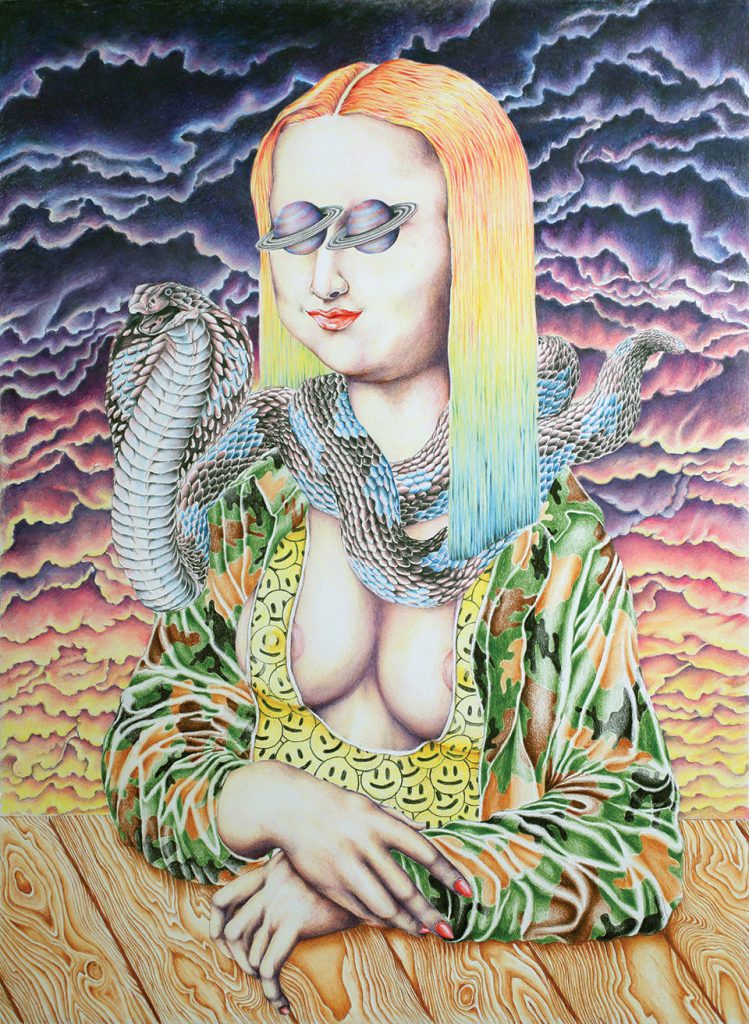
LSJ: You’ve spent time in Santa Cruz and live in Benicia. How have your surroundings affected your work?
CM: Even though I do not live in Santa Cruz anymore, my experiences there continue to inspire me. Surfing, and the culture that surrounds it, has a huge influence in my work. I reference surf culture through my use of bright colors, tropical imagery, and I aim to give much of my work a “beachy” ambiance. My drawings, paintings, and designs often strive to exist in a middle ground between grotesqueness and beauty, and Santa Cruz as a town often embodies this. It is an idyllic surf town with a thriving beach culture, yet it also has a dirty and disturbing underbelly, composed of murders, drugs, gangs, and so on.
LSJ: When did you first become interested in art? First start making it? Where do you get your ideas?
CM: I have been making art since I was a small child. For as long as I can remember, I have always been drawn to making pictures. When I was younger, I mainly drew my favorite creatures and toys. These subjects included dinosaurs, sharks, whales, Power Rangers, and airplanes. Now I mainly draw inspiration from popular culture. The main facets of this broad concept that I reference include entertainment, fashion, food, and mass production. I try to merge objects, creatures, or characters that I am personally drawn to with these popular culture symbols or modes or presentation. One of my main goals is to produce work that is relevant to the modern times while simultaneously representing myself as an individual. As modern humans, we are constantly bombarded with media, and this informs the chaotic, overly-patterned nature of some of my work.
LSJ: Your work has a certain timeliness to it—it feels super internet-age appropriate. Do you think consciously about creating work that is very “now”? What was your work like pre-internet?”
CM: The Internet definitely plays a huge role in creating work. Before the Internet, much of my work was derived solely from my thoughts or notebooks. It was much more surreal and less based in reality. The Internet is crucial in helping me follow trending topics, which helps me design new bodies of work. I want my work to comment on relevant and current issues. I casually research these trending topics in order to discover the varying and conflicting opinions within the discussions, and then try to create work that explores each side, without expressing any personal opinion.
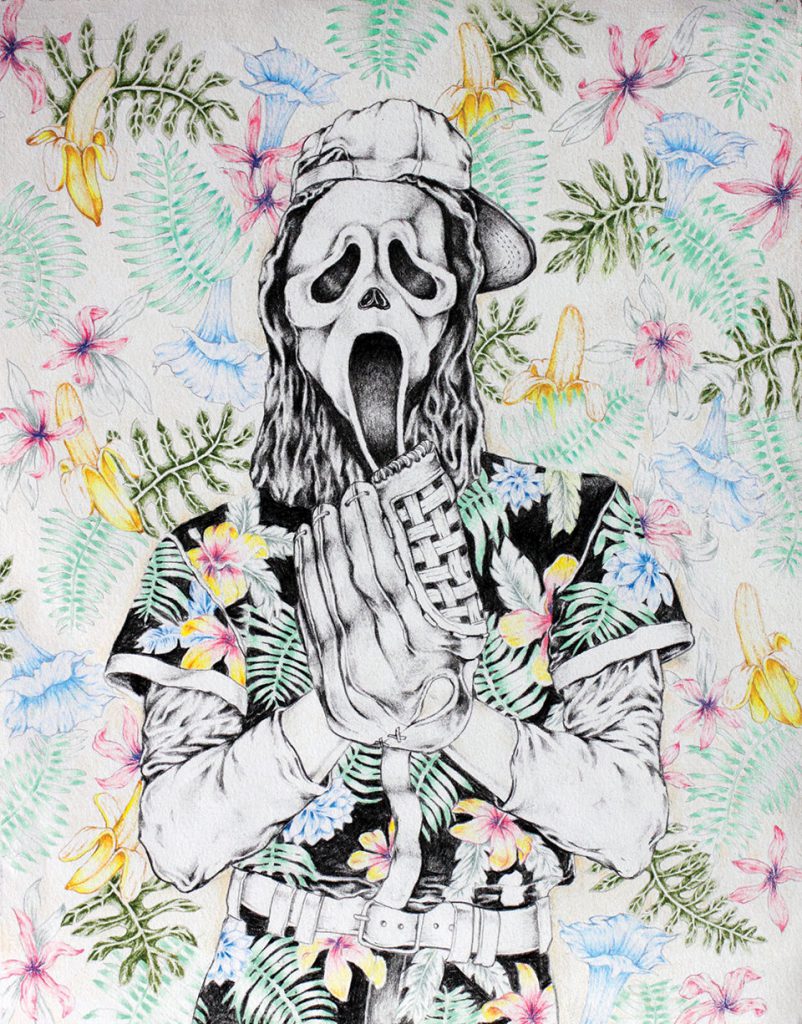
LSJ: Speaking of the now, what kind of role does pop culture play in your life and work? “Justin Bieber and the Golden Pussy, Mona Lisa and the Love Snake Live to Party, If Bill Murray Was a Triple Bacon cheeseburger, If Whoopi Goldberg Was My Best friend...” these pieces are fun, imaginative—do they come to you quickly? Do you feel very in touch with the pop culture world?
CM: I don’t necessarily feel in touch with the pop culture world. However, I feel a need to create work that is slightly informed by it, because so many people are completely obsessed with it. The Bill Murray and Whoopi Goldberg drawings were actually titled after they were finished. While creating those two drawings, my main intent was to create portraits composed of food items, and I never intended them to slightly look like well-known people. But, after completion, titles such as “Hamburger Head” or “Steak face” seemed hollow and unimportant. Naming them after celebrities gave the drawings unforeseen meaning and relevance to viewers. These titles became as important as the imagery itself, which was given added significance through the referencing of familiar people.
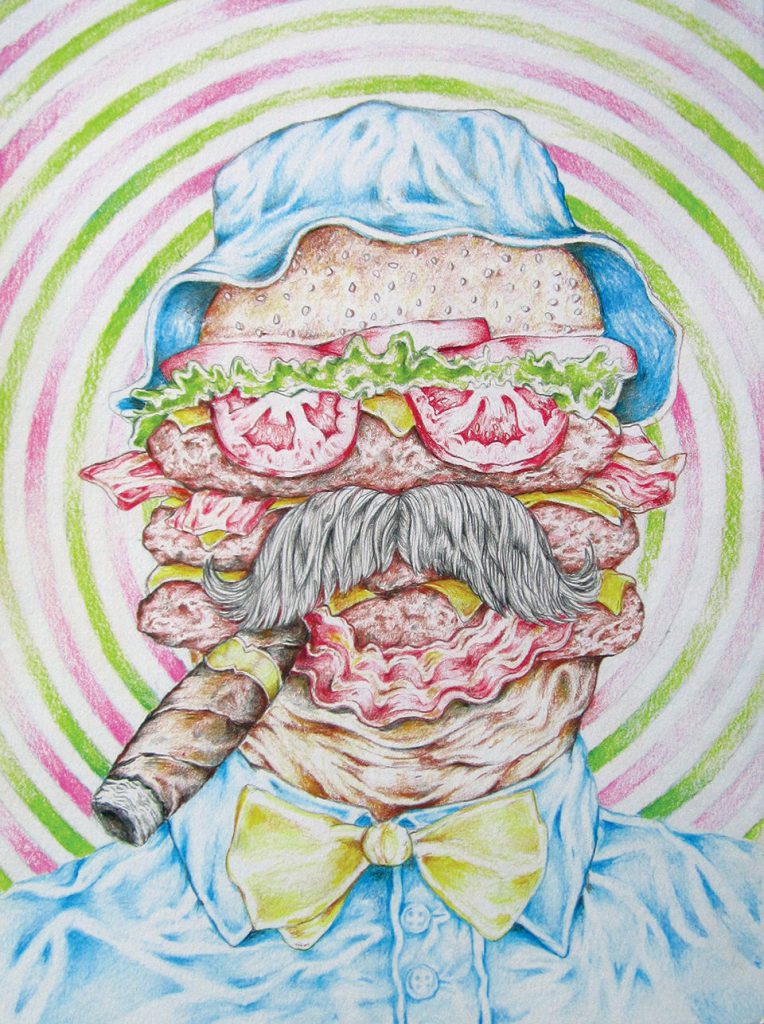
I drew Justin Bieber a few months back during the time in which he was getting a lot of press for acting up. I saw countless articles in magazines and various Internet sites about him and felt compelled to draw him. He is an interesting icon because the public is so divided over its opinion of him. Many people absolutely love and adore him, and many people would love to personally slaughter him. While designing this drawing, I wanted to create a piece that equally explored both sides of his stardom, while remaining neutral. The drawing did very well on the Internet, and it was very interesting, because half of the people that commented on it assumed I was praising Bieber, while the other half thought I was criticizing Bieber. I viewed this as a great success because I want my work to expose viewers to the manner in which they view the world. Their interpretation of my work is not derived from my intent as an artist, but embodies the way in which their personal world-view causes them to react to loaded imagery.
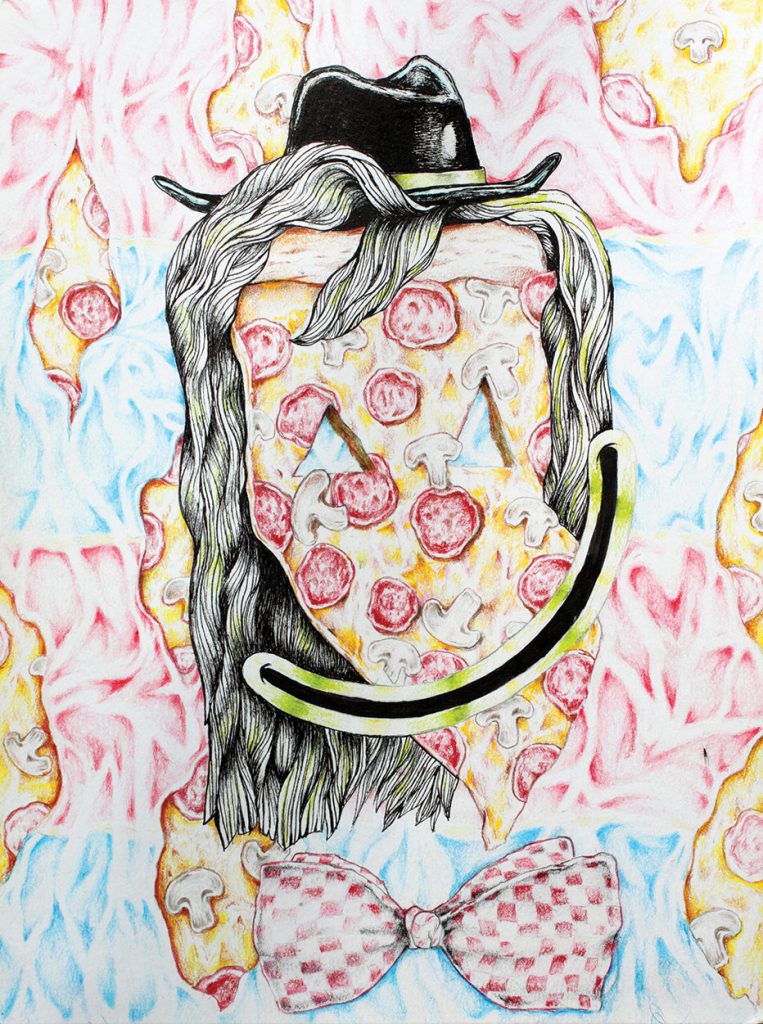
LSJ: How long does it take you to do a black and white drawing as intricate as, say, “Future Fuck”? How about the colored drawings?
CM: The black and white drawings are pretty quick doodles, and I spend between 10-20 hours on most of them. However, the Justin Bieber and Mona Lisa drawings take between 150-200 hours. Working with colored pencils takes a very long time, and a process of never ending blending, burnishing, and layering of colors is required to achieve the smooth consistency of the work. III
